
Our face is not only the most visible part of our body, but it also serves as a canvas for our emotions, expressions, and personality. Taking care of our facial skin is not just about looking good, but it’s also an essential aspect of self-care and overall well-being. Facial, a professional skincare treatment that focuses on cleansing, exfoliating, nourishing, and rejuvenating the skin, is a popular and effective way to achieve healthy, glowing, and youthful skin. In this ultimate guide to skincare and self-care, we will explore the benefits of facial treatments, different types of facials, and how to incorporate them into your skincare routine.
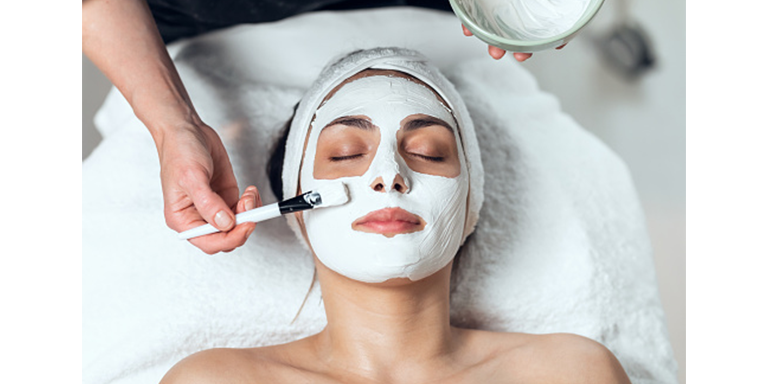
Credit- Unsplash
A facial or facial treatment is a skin care treatment that typically involves a combination of cleansing, exfoliating, steaming, massaging, and applying various masks, serums, and moisturizers to the face. The primary purpose of a facial is to improve the health and appearance of the skin by removing dead skin cells, unclogging pores, and increasing circulation to the face.
Facials are typically performed by licensed estheticians or skincare professionals and can be customized to meet the individual needs of each client. Different types of facials use different products and techniques based on the client’s skin type and concerns. For example, someone with dry skin may benefit from a hydrating facial, while someone with acne-prone skin may benefit from an acne facial.
Facial benefits for skin can be a relaxing and rejuvenating experience, and can also help to address a variety of skin concerns such as dullness, uneven skin tone, fine lines and wrinkles, and acne.
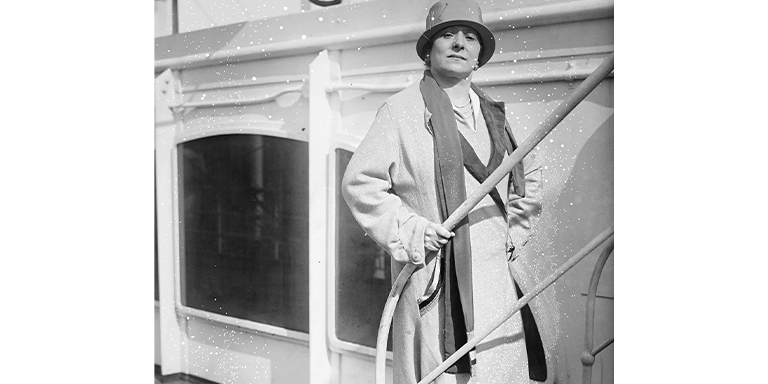
Credit- Britannica
Facials have been around for centuries, with different cultures and civilizations having their own unique versions. In ancient Egypt, for example, people used natural ingredients like honey and milk to cleanse and moisturize their skin. In ancient Greece and Rome, people used steam baths and massages to rejuvenate their skin.
The modern concept of a facial, however, can be traced back to the early 20th century. In 1905, Helena Rubinstein, a Polish-American businesswoman and cosmetics entrepreneur, opened her first beauty salon in New York City. Rubinstein is credited with popularizing the facial as a mainstream beauty treatment.
During this time, advancements in science and technology also led to the development of new skincare products and techniques. For example, in the 1920s and 1930s, electrotherapy was used to stimulate facial muscles and improve the appearance of the skin.
Today, facials have become a popular way for people to pamper themselves and improve the health and appearance of their skin. There are many different types of facials available, each with its own unique benefits and techniques. Some of the most popular types include deep-cleansing facials, anti-aging facials, and acne facials.
Let’s discuss some of the facial types and benefits you should know about.
There are different types of facials available, each designed to target specific skin concerns and cater to different skin types. Here are some popular types of facials-
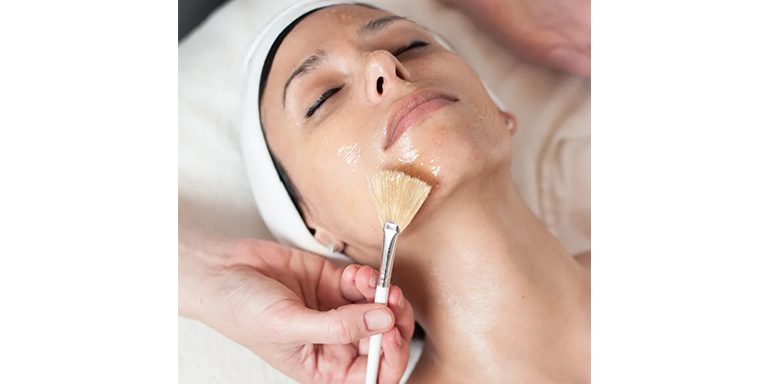
Credit- Refinery29
This type of facial is ideal for those with oily or acne-prone skin. It involves thorough cleansing, exfoliation, and extraction to unclog the pores and remove impurities. It may also include a purifying mask and high-frequency treatment to kill bacteria and reduce inflammation.
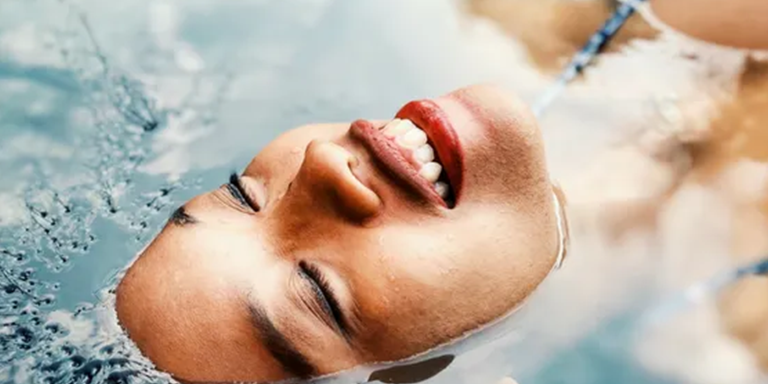
Credit- Renew Medical Spa
This facial is perfect for dry, dehydrated, or mature skin. It focuses on replenishing the skin’s moisture levels with hydrating serums, masks, and moisturizers. It may also involve a gentle exfoliation to remove dry and flaky skin, leaving the skin soft, plump, and nourished.
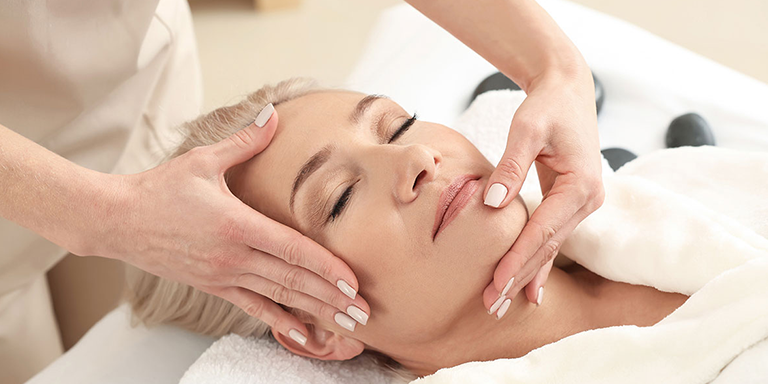
Credit- Sanctuary Salon And Med Spa
This facial is tailored for mature or aging skin. It includes ingredients that boost collagen production, such as retinol, peptides, and antioxidants, to improve skin texture, firmness, and elasticity. It may also involve a microdermabrasion or chemical peel to stimulate cell turnover and reduce the appearance of fine lines and wrinkles.
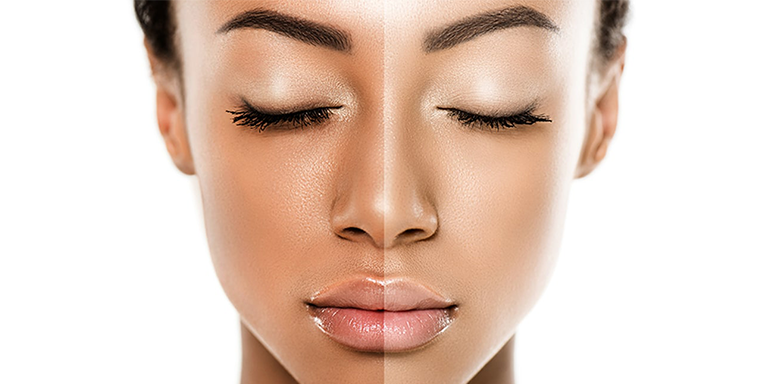
Credit- Mirrors Beauty Lounge
This is a facial for skin whitening, dull, uneven, or hyperpigmented skin. It involves the use of ingredients like vitamin C, kojic acid, and glycolic acid to brighten and even out the skin tone. It may also include a lighting mask or LED light therapy to further enhance the brightening effect.
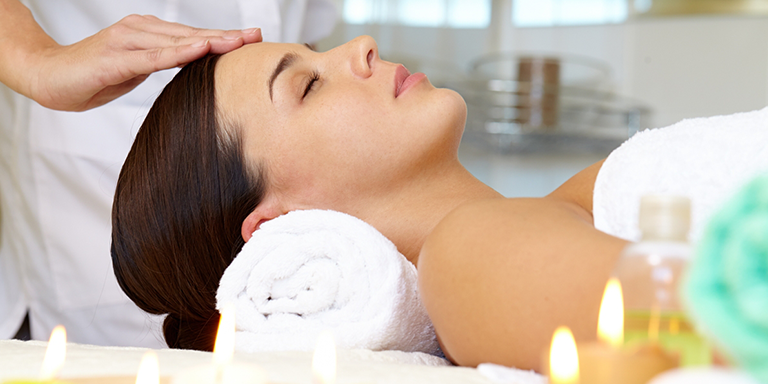
Credit- West Michigan Woman
This facial is designed for those who want to unwind and de-stress. It involves gentle cleansing, massage, and moisturizing using soothing and calming products like chamomile, lavender, and aloe vera. It may also include aromatherapy or hot stone massage to promote relaxation and stress relief.
The exact steps involved in a facial may vary depending on the type of facial and the skincare professional providing the treatment. However, here are the general steps you can expect during a typical facial-
1. Consultation– The skincare professional will begin by asking about your skincare concerns, skin type, and any allergies or sensitivities you may have.
2 Cleansing– The first step of a facial typically involves cleansing the skin to remove makeup, dirt, and oil.
3. Skin analysis– The skincare professional will examine your skin closely to determine your skin type and any areas of concern, such as dryness, acne, or hyperpigmentation.
4. Exfoliation– Exfoliation may be performed using a gentle scrub, enzyme peel, or chemical exfoliant to remove dead skin cells and promote cell turnover.
5. Extraction– If necessary, the skincare professional may perform extractions to remove blackheads, whiteheads, or other blemishes.
6. Massage– A facial massage may be performed using gentle, circular motions to improve circulation and relax the facial muscles.
7. Mask- A facial mask may be applied to the skin, tailored to your specific skin concerns, and left on for a few minutes to deeply nourish and hydrate the skin.
8. Serum and moisturizer– The skincare professional will apply a serum and moisturizer to the skin to lock in hydration and provide additional nourishment and protection.
9. Sunscreen– Finally, sunscreen may be applied to protect the skin from further damage.
The products used in a facial can vary depending on the type of facial being performed and the needs of the individual receiving the treatment. Some common products used in a facial may include-
1. Cleansers– to remove dirt and impurities from the skin.
2. Exfoliants– to remove dead skin cells and unclog pores.
3. Steam– to open up the pores and promote relaxation.
4. Masks– to provide hydration and nourishment to the skin.
5. Serums– to address specific skin concerns like dark spots, fine lines, or acne.
6. Moisturizers– to hydrate and protect the skin from further damage.
7. Sunscreen– to protect the skin from harmful UV rays.
Facials offer numerous benefits for the skin, including-
1. Deep cleansing– Facials involve a deep cleansing of the skin, removing dirt, oil, and impurities that can clog pores and cause breakouts.
2. Exfoliation– Facials often include exfoliation, which helps to remove dead skin cells and reveal fresh, healthy skin.
3. Hydration– Facials often include moisturizing treatments, which help to hydrate the skin and improve its texture and appearance.
4. Anti-aging benefits– Many facials include ingredients like peptides and antioxidants, which can help to reduce the appearance of fine lines and improve skin texture and elasticity.
5. Relaxation– Facials can be a relaxing and stress-relieving experience, providing a much-needed break from the demands of daily life.
6. Improved circulation– The massage and manipulation involved in a facial can improve blood flow to the skin, which can help to promote a healthy, glowing complexion.
7. Customization– Facials can be customized to meet individual skin concerns, whether it’s acne, hyperpigmentation, or aging skin.
While facials can offer benefits to the skin, there are also some potential disadvantages or risks associated with the treatment, such as-
1. Skin irritation or allergic reactions to the products used in the facial.
2. Breakouts or acne due to the extraction process.
3. Skin sensitivity or redness after the treatment.
4. Sun sensitivity or sunburn due to the exfoliation process.
5. Infections or scarring from improper extraction techniques.
6. High cost, especially for specialized facials.
7. The potential spread of bacteria if the tools used are not properly sanitized.
It’s important to discuss any concerns or potential risks with a skincare professional before undergoing a facial treatment.
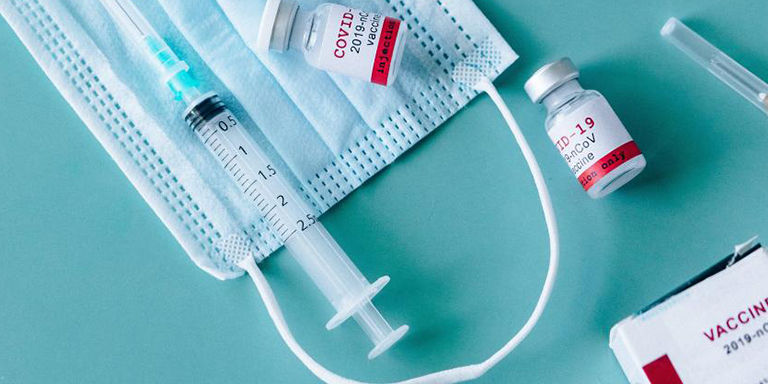
Credit- the United Nations
The COVID-19 pandemic has significantly impacted the beauty industry and how facials are performed. In a post-COVID-19 world, the condition of facials may depend on several factors, such as safety measures, consumer demand, and the adoption of new technologies.
Firstly, safety measures and hygiene protocols may continue to be a priority in spas and salons. This could include mandatory mask-wearing for therapists and clients, increased sanitation practices, and social distancing measures.
Secondly, consumer demand may shift towards facials that offer a more holistic approach to skincare. This could mean a focus on natural and organic ingredients and treatments that support overall wellness, such as aromatherapy or massage.
Finally, there may be an increase in the adoption of technology in facials. For example, virtual consultations could become more common, allowing clients to discuss their skincare concerns with a therapist before coming in for treatment. Advanced technology such as LED light therapy, microcurrents, and ultrasonic devices may also be incorporated into facials for their antibacterial and anti-inflammatory properties. The condition of facials post-COVID-19 is likely to be heavily influenced by safety measures, consumer demand, and the use of innovative technologies.
Skin-specific facials are facial treatments that are customized to address the specific needs of an individual’s skin type and concerns. Rather than using a one-size-fits-all approach, these facials are tailored to meet the unique needs of each person’s skin.
During a skin-specific facial, a trained esthetician or therapist will assess the individual’s skin type, concerns, and goals for their skin. They will then select products and techniques that are best suited to address those specific concerns.
For example, someone with dry skin may benefit from a facial that uses hydrating products such as hyaluronic acid to keep the skin water-locked. On the other hand, someone with acne may benefit from facials for acne that includes deep cleansing and exfoliation to help unclog pores and remove acne spots.
Other factors that can be considered during a skin-specific facial include age, sun damage, sensitivity, and acne. For example, an anti-aging facial may include ingredients such as retinol and antioxidants to help reduce the appearance of fine lines and wrinkles. A facial for sensitive skin may use gentle, fragrance-free products to avoid irritation.
By tailoring the facial to an individual’s specific needs, skin-specific facials can help to address a range of skin concerns and leave the skin looking and feeling rejuvenated and refreshed.
Facials are an excellent way to pamper your skin and address various skin concerns. Here are some common facial treatments that are tailored to specific skin types-
1. Dry skin- For individuals with dry skin, a hydrating facial is a great option. These facials typically include ingredients such as hyaluronic acid, glycerin, and ceramides to help restore moisture to the skin. A gentle exfoliation may also be included to help remove dead skin cells and allow the skin to better absorb the hydrating products.
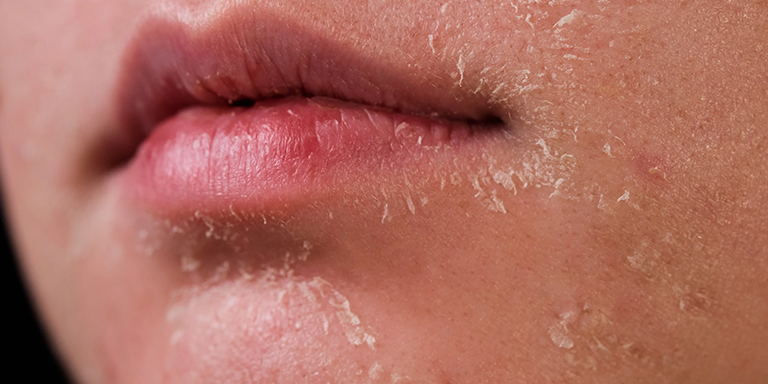
Credit- South China Morning Post
2. Oily skin– Oily skin can benefit from facials that help to regulate oil production and unclog pores. Deep cleansing and exfoliating treatments, such as microdermabrasion or chemical peels, can help to remove excess oil and dead skin cells. Clay masks or other purifying treatments may also be used to help absorb excess oil.
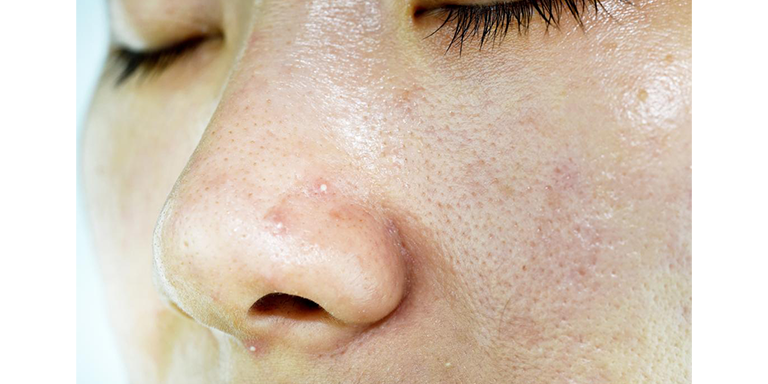
Credit- Medical News Today
3. Combination skin– Combination skin can be tricky to treat because it’s oily in some areas and dry in others. A facial that includes both deep cleansing and hydration can be effective. This may involve using an oil-free cleanser to remove excess oil from the T-zone, followed by a hydrating mask or serum to restore moisture to dry areas.
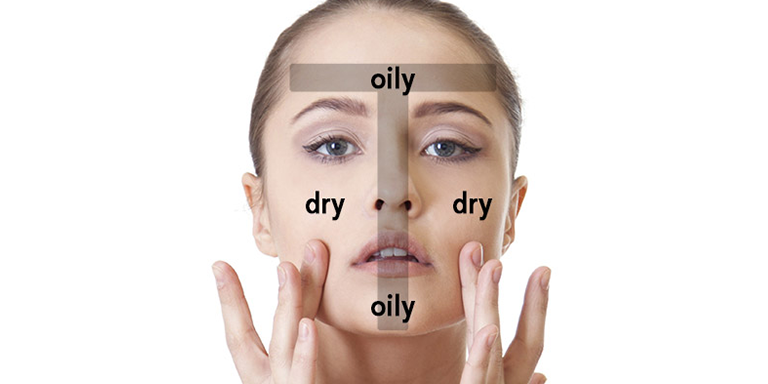
Credit- Stylecraze
4. Sensitive skin– Sensitive skin requires gentle, fragrance-free products that won’t cause irritation. Facials that use gentle exfoliants, such as enzymes or alpha-hydroxy acids, can help to remove dead skin cells without causing redness or irritation. A calming mask, such as one that contains chamomile or aloe vera, can help to soothe the skin.
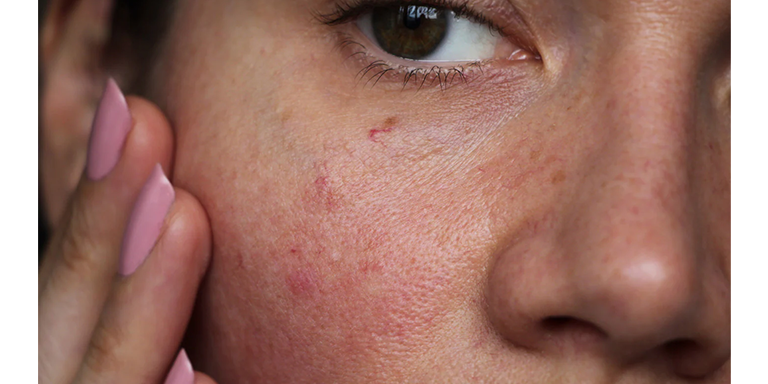
Credit- Dermalogica UK
5. Aging skin– For individuals with aging skin, facials that include ingredients such as retinol, peptides, and antioxidants can help to reduce the appearance of fine lines and wrinkles. A facial massage can also help to stimulate blood flow and promote collagen production, which can help to improve the skin’s elasticity and firmness.
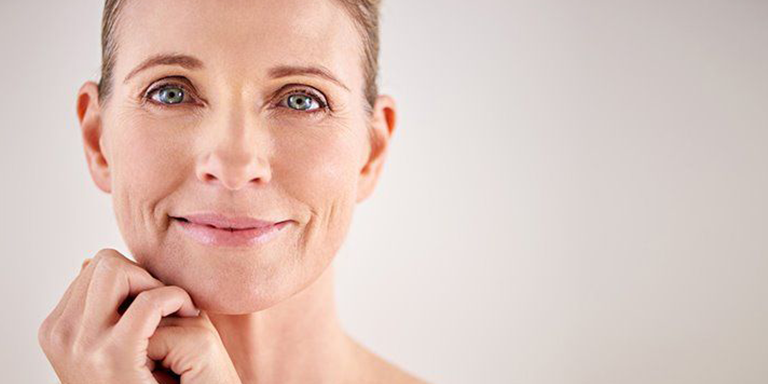
Credit- Everyday Health
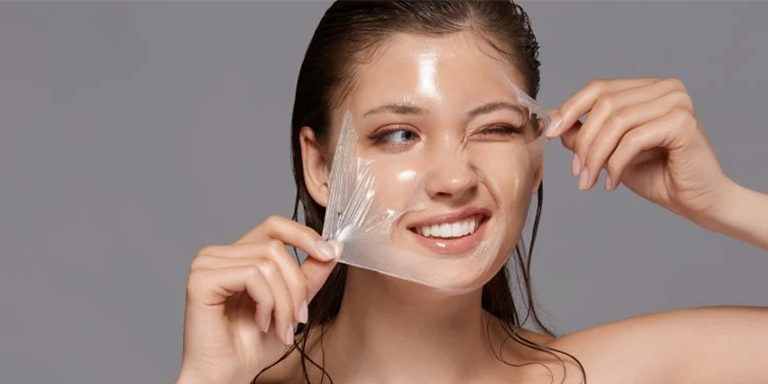
Credit- Lovoir Beauty
Chemical facials, also known as chemical peels, are facial treatments that use chemical solutions to remove the outermost layer of skin. The chemical solution is applied to the skin, where it works to dissolve the bonds between dead skin cells, allowing them to be easily sloughed off.
The exact chemical formation of the solution used in a chemical facial can vary depending on the desired depth of the peel and the specific skin concerns being addressed. Some common ingredients used in chemical peels include-
1. Alpha-hydroxy acids (AHAs)– AHAs, such as glycolic acid and lactic acid, are often used in mild to moderate chemical peels. They work by breaking down the bonds between dead skin cells, helping to improve the skin’s texture and tone.
2. Beta-hydroxy acids (BHAs)– BHAs, such as salicylic acid, are often used in chemical peels for acne-prone skin. They work by penetrating deep into the pores to dissolve excess oil and dead skin cells, helping to prevent breakouts and improve the appearance of acne scars.
3. Trichloroacetic acid (TCA)– TCA is a medium-depth chemical peel that is often used to address fine lines and wrinkles, age spots, and uneven skin tone. It works by penetrating deeper into the skin to stimulate collagen production and encourage cell turnover.
4. Phenol– Phenol is a deep chemical peel that is used to address more severe skin concerns, such as deep wrinkles, sun damage, and hyperpigmentation. It works by penetrating the skin’s deeper layers to stimulate collagen production and promote new skin cell growth.
During a chemical facial, the solution is applied to the skin and left on for a specific amount of time, depending on the desired depth of the peel. After the solution is removed, the skin may appear red and flaky for several days as the outermost layer of skin peels away, revealing smoother, more youthful-looking skin beneath. It’s important to follow the post-treatment instructions provided by the esthetician or therapist to ensure proper healing and to avoid potential complications.
Chemical facials, also known as chemical peels, have several benefits including-
1. Improving skin texture– Chemical facials can improve skin texture by removing dead skin cells, unclogging pores, and stimulating collagen production.
2. Reducing fine lines and wrinkles– Chemical facials can help reduce the appearance of fine lines and wrinkles by promoting the production of new skin cells and collagen.
3. Treating acne– Chemical facials can help treat acne by unclogging pores, reducing inflammation, and promoting the shedding of dead skin cells.
4. Reducing hyperpigmentation– Chemical facials can help reduce the appearance of hyperpigmentation, such as age spots, sun spots, and melasma, by removing the outer layer of skin that contains excess pigment.
5. Brightening skin tone– Chemical facials can help brighten skin tone by promoting the growth of new, healthy skin cells.
It’s important to note that while chemical facials can provide many benefits, they are not suitable for everyone. It’s important to consult with a qualified dermatologist or aesthetician before undergoing any type of facial treatment to determine if it’s right for you.
While chemical facials have many benefits, they can also have some potential disadvantages or side effects, such as-
1. Redness and irritation– Chemical facials can cause temporary redness, irritation, and sensitivity to the treated area. This is more common in people with sensitive skin or those who have had a deep peel.
2. Skin damage– Chemical facials involve the use of acid solutions that can cause skin damage if not used properly. Over-exfoliating can cause burns, scarring, or hyperpigmentation, especially on darker skin tones.
3. Increased sensitivity to sunlight– Chemical facials can make your skin more sensitive to sunlight, making it more susceptible to sunburn and other types of skin damage. It is important to use sunscreen and avoid direct sunlight after a chemical peel.
4. Not suitable for all skin types– Chemical facials may not be suitable for all skin types, especially those with a history of severe acne, eczema, rosacea, or other skin conditions.
5. Multiple sessions may be required– Depending on the severity of the skin concern, multiple sessions of chemical facials may be required to achieve the desired results.
Overall, chemical facials can be beneficial for many people when performed by a trained and experienced professional. However, it’s important to carefully consider the potential risks and benefits before undergoing any facial treatment.
Facials are important not just in summer, but in winter too because the cold, dry air can take a toll on your skin. Some of the benefits of facials during the winter months include-
1. Hydration– Winter air tends to be dry, which can leave your skin feeling dehydrated and flaky. Facials can provide a deep hydrating treatment that helps to replenish moisture and restore your skin’s natural balance.
2. Exfoliation– Winter weather can also make your skin feel rough and dull. Facials can help to exfoliate dead skin cells, revealing a brighter, smoother complexion.
3. Repair– Exposure to harsh winter weather can cause damage to your skin, such as redness, irritation, and inflammation. Facials can help to repair and soothe your skin, reducing the effects of winter weather.
4. Preparation for spring– Getting regular facials in the winter can also help to prepare your skin for the spring season. By providing deep hydration and exfoliation, facials can help to ensure that your skin looks and feels its best when the weather warms up.
There are several reasons why people should consider getting facials done. Some of the benefits of facials include-
1. Improved skin texture and appearance– Facials can help to improve the texture and appearance of the skin by removing dead skin cells, unclogging pores, and stimulating collagen production. This can result in smoother, more radiant-looking skin.
2. Relaxation and stress relief– Facials can be a relaxing and therapeutic experience that helps to reduce stress and tension. Many facials include massage and aromatherapy, which can help to promote relaxation and calmness.
3. Customized treatment– A professional aesthetician can customize a facial treatment to meet the unique needs of an individual’s skin. This can help to address specific concerns, such as acne, hyperpigmentation, or signs of aging.
4. Expert advice and guidance– Aesthetician can offer expert advice and guidance on skincare products and routines based on an individual’s skin type and concerns.
5. Early detection of skin concerns– Regular facials can help to detect and address potential skin concerns early on, such as skin cancer or signs of aging, allowing for timely intervention and treatment.
Getting a facial is a great way to give your skin a boost, but it’s important to maintain a regular skincare routine to keep your skin healthy and glowing between treatments. Here are some tips for incorporating facials into your skincare routine-
1. Determine your skin type and concerns– Before choosing a facial, identify your skin type and concerns, so you can choose a facial that caters to your specific needs.
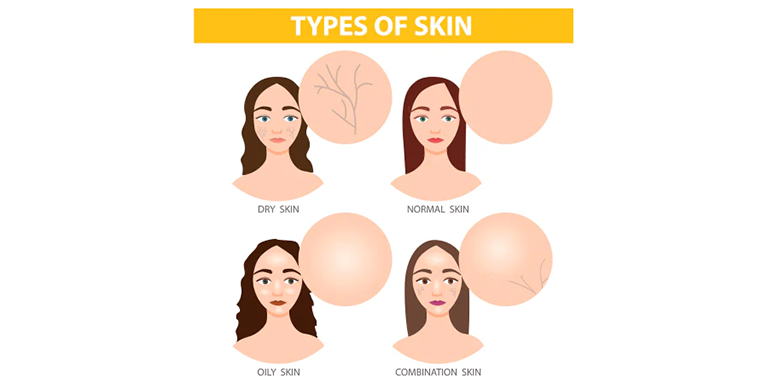
Credit- SkinKraft
2. Consult with a skincare professional– Consult with a skincare professional to determine the best type of facial for your skin and to address any questions or concerns you may have.

3. Schedule regular facials– Aim to get a facial every 4-6 weeks to maintain healthy, glowing skin.
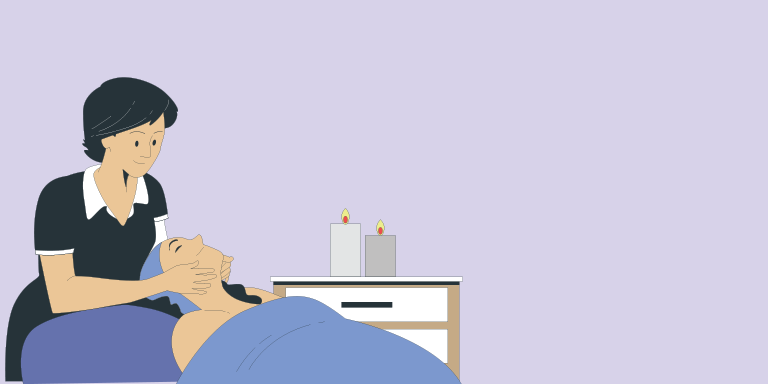
4. Use quality skincare products– Use high-quality skincare products that are tailored to your skin type and concerns, and incorporate them into your daily skincare routine.
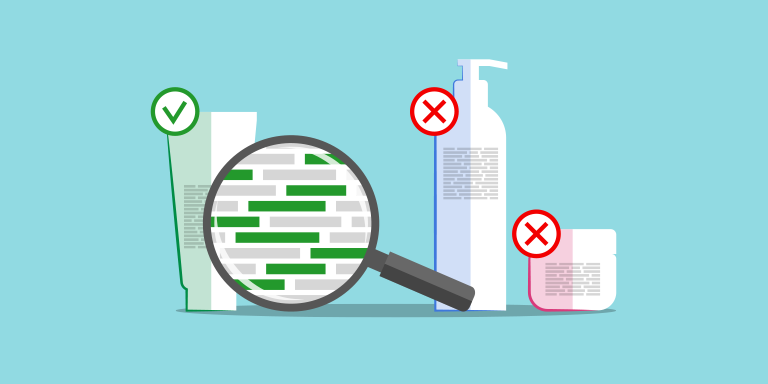
5. Practice good skincare habits– Practice good skincare habits like washing your face twice a day, wearing sunscreen, and drinking plenty of water to keep your skin healthy and glowing.
After exploring the topic of facials, it is clear that this beauty treatment can provide numerous benefits for the skin. Facials can help to cleanse and exfoliate the skin, improve its texture and appearance, and promote relaxation and stress relief.
There are various types of facials available, each with its own unique benefits targeted toward specific skin concerns. It is important to choose the right type of facial based on your skin type and individual needs.
While facials can be a great addition to any skincare routine, it is important to remember that they should not be relied on as the sole solution for skin issues. A consistent skincare routine, along with a healthy lifestyle, is essential for achieving and maintaining healthy, glowing skin.
Overall, facials can be a wonderful way to pamper yourself while also caring for your skin. With the right type of facial and regular maintenance, you can achieve a radiant complexion and a refreshed, rejuvenated look.
Yes, facial treatments can be good for the skin, as they can help improve circulation, exfoliate dead skin cells, and provide hydration to the skin. No matter if you’re looking for facial treatment for acne marks or dry skin, facial solves every issue.
There is no one “best” facial, as the ideal type of facial depends on an individual’s skin type, concerns, and preferences. It’s best to consult with a skincare professional to determine the most appropriate facial for your specific needs.
Facial treatments typically involve cleansing, exfoliating, steaming, extracting impurities, applying a mask, and moisturizing. However, the specific steps and techniques used can vary depending on the type of facial and the needs of the individual receiving the treatment.
Yes, a facial can potentially improve the skin’s appearance and texture by providing hydration, exfoliation, and nourishment to the skin. You can even get facial treatment for acne, dry, oily, and combination skin as your requirement
Facials generally do not leave marks, but depending on the individual’s skin sensitivity and the type of treatment, there may be temporary redness or irritation immediately following the treatment. However, this should subside within a few hours to a day.
The duration of the effects of a facial treatment can vary depending on the type of facial, the individual’s skin type, and other factors like lifestyle and skincare routine. Typically, the results of a facial can last anywhere from a few days to a few weeks. Regular facial treatments can help maintain the benefits and improve the overall health and appearance of the skin.
While facials are generally safe for most people, individuals with certain skin conditions like eczema, rosacea, or active acne should avoid certain types of facials or consult with a skincare professional before getting a treatment. Pregnant women may also need to avoid certain types of facials or specific ingredients. It’s best to discuss any concerns or underlying health conditions with a skincare professional before getting a facial.
Facials can potentially brighten the skin’s appearance by exfoliating dead skin cells, improving circulation, and providing hydration and nourishment. However, the extent of the brightening effect depends on various factors like the type of facial, the individual’s skin type, and the frequency of treatments.
Facials may help to some extent in reducing tan by exfoliating the dead skin cells and providing hydration and nourishment to the skin. However, the effectiveness of a facial in removing tan depends on the intensity of the tan and other factors such as the type of facial and the individual’s skin type.
Yes, it is generally safe to get a facial twice in a month, especially if you have specific skin concerns or if you are undergoing a treatment plan recommended by a skincare professional. However, the frequency of facials should depend on an individual’s skin type, sensitivity, and the type of facial being performed.